The CAMS network expanded with 8 stations and 12 new cameras, while 2 stations with 2 cameras each were temporary discontinued. The number of operational cameras increased from 49 to 57 and a larger portion of the atmosphere could be monitored. 309 of the 366 nights allowed successful collection of orbits. In total 25187 orbits were obtained in 2016.
1 Introduction
Started in March 2012 with two stations and two cameras, CAMS Benelux counted 21 stations with 57 cameras by end of 2016. The number of orbits collected has increased year after year, thanks to the growing number of operational cameras and stations, combined with improved software and a smooth reduction pipeline. CAMS Benelux is based on 100% volunteers work and is financed by its participants. All results from CAMS Benelux are transferred to the global CAMS project, coordinated by Peter Jenniskens.
2 2016 Statistics
The first few months of 2016 offered a normal weather pattern for our climate without any exceptional months in neither good, nor bad sense. From mid-May until about mid-July the weather was mostly uncooperative with lots of rain and cloudy nights. June 2016 was the worst month of June ever in weather statistics, not only bad for CAMS but also agriculture was severely hit by the extreme bad weather. Altogether it is most remarkable that CAMS managed to collect a nice number of orbits in such exceptional bad weather period.
Table 1 – Year statistics of CAMS BeNeLux.
|
Year |
Nights/month | Total orbits | Aver.Cam. | Max. Cam. | Posts | Nights |
|
2012 |
10,1 | 1.079 | 2,6 | 8 | 6 |
101 |
|
2013 |
16,5 | 5.684 | 9,5 | 26 | 13 |
198 |
|
2014 |
22,4 | 11.288 | 20,6 | 37 | 14 |
269 |
|
2015 |
24,5 | 17.259 | 29,1 | 49 | 15 |
294 |
|
2016 |
25,8 | 25.187 | 40,3 | 57 | 21 |
309 |
| – | 60.497 | – | – |
1.171 |
The situation improved somehow in July and the exceptional poor period was followed by exceptional favorable months of August and September with record numbers of orbits collected. Although that the night 11-12 August with a predicted activity outburst was ruined by clouds at most stations, the traditional night of the Perseid maximum had all over the network clear sky, good for a record number of 830 orbits recorded in a single night. All 30 September nights allowed to successfully collect orbits with some series of transparent nights at most stations.
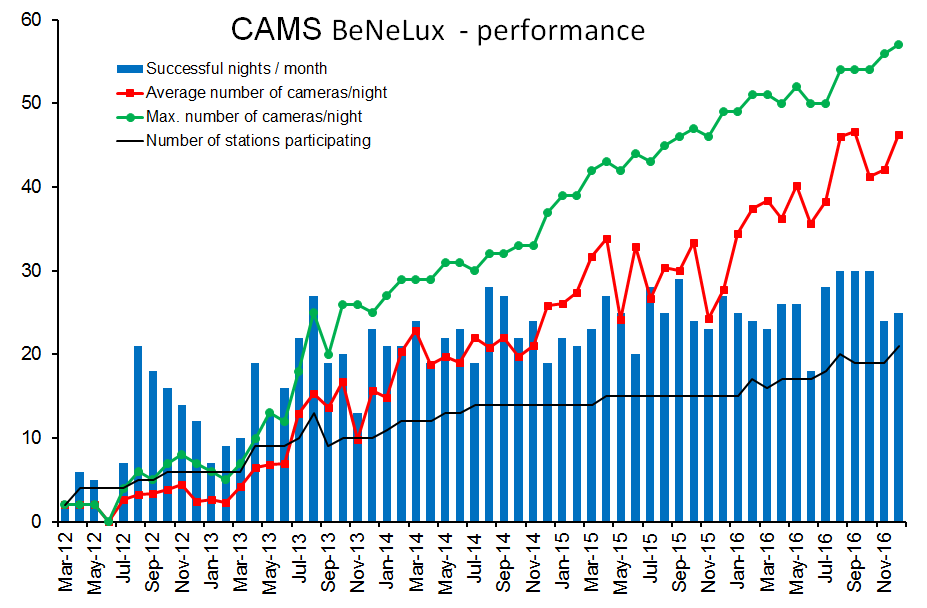
Figure 1 – Evolution of the performance of the CAMS network: blue bars are the number of nights with successfully collected orbits, the black line displays the number of operational stations active in the month, de red line is the average number of operational cameras effectively active in the month and the green line gives the maximum number of available operational cameras during the month.
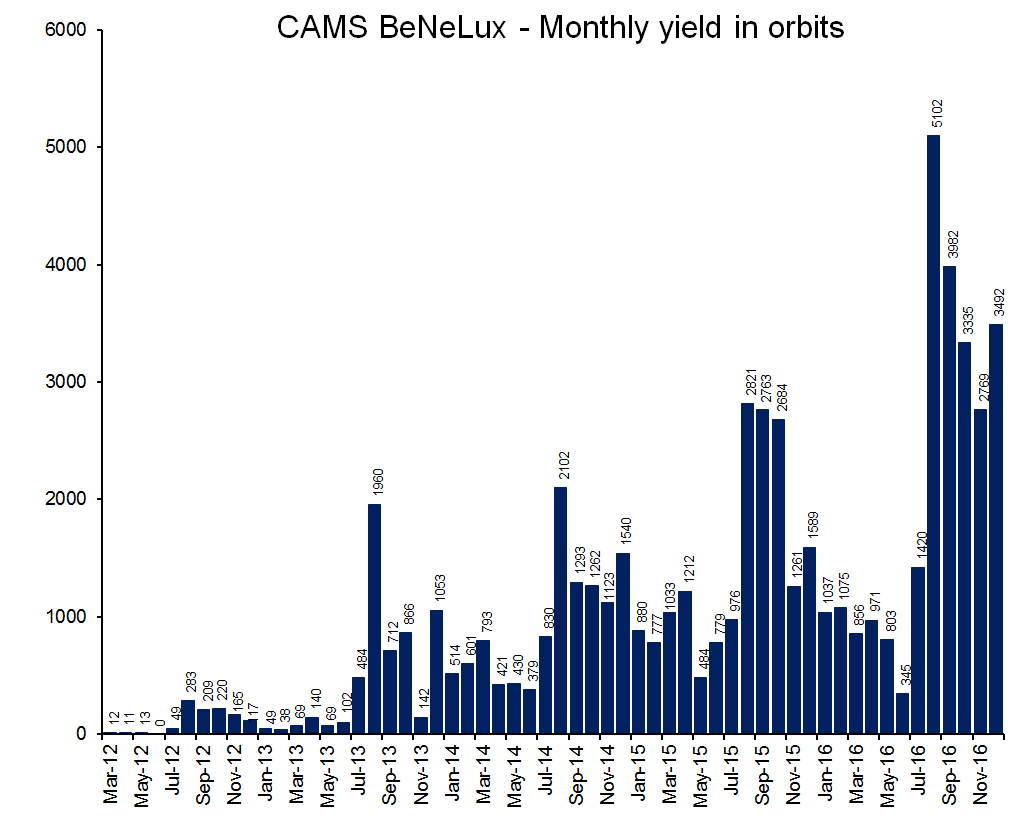
Figure 2 – The monthly yield in number of orbits.
October 2016 had the usual return to the less favorable autumn weather circumstances with mainly partial clear nights. Only one night during the Orionid activity offered favorable weather circumstances, we’ll have to hope for a better chance to register the Orionids in one of the next years. November and December came with the typical poor autumn weather, except for several unusual transparent nights in the last week of November as well as in the first week of December. Both the Geminids and the Ursids maxima remained hidden behind clouds for most of the cameras.
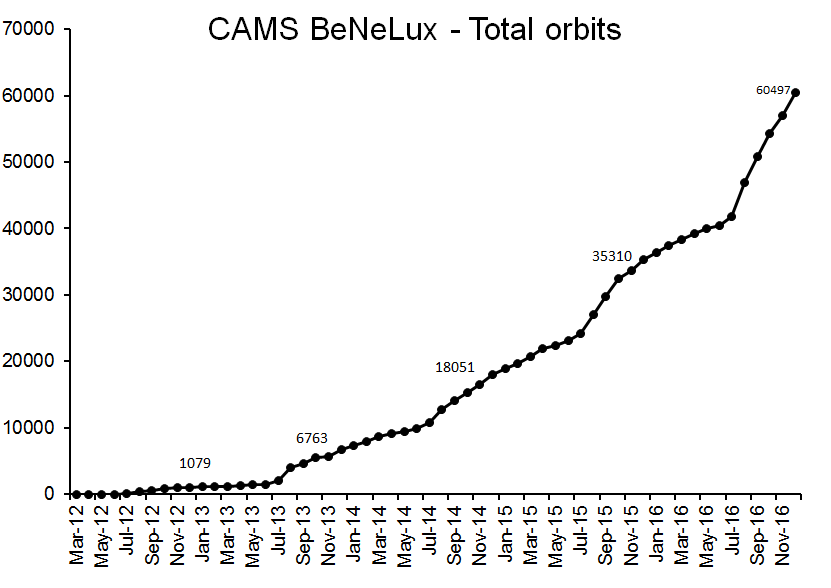
Figure 3 – The growth rate in number of orbits collected.
Figure 1 and Table 1 display the growth of the network very well. While the number of useable nights still increased from 294 in 2015 to 309 in 2016, mainly thanks to the more generalized use of auto-CAMS and the expansion of the network with the increase in the number of operational stations and cameras. Thanks to auto-CAMS a larger portion of the available hardware could be operated on almost permanent bases.
That the capacity of the CAMS network increased significantly in 2016 appears very well from Figure 2 with record numbers of orbits recorded in the last 6 months of 2016. This growth in orbits collected is also very well visible in the accumulated number of orbits displayed in Figure 3.
The CAMS project has its main focus on the poorly known meteor activity throughout the year, the major shower maxima are not a priority for CAMS. Therefore we keep track of a day by day tally to see how many orbits we collect for each calendar date which correspondents to about 1° in solar longitude (see Figure 4). With hundreds of orbits per solar longitude it makes sense to look for associations between the orbits to reveal weak shower activity.
In about 5 years of work one single night must have been always cloudy and remains without orbits: 18–19 March. For as many as 193 nights 100 or more orbits were collected, 84 nights with 250 or more orbits, 12 with 500 or more orbits. Best night is 12–13 August with as many as 2297 orbits for a single night. May and June prove they are the most challenging months to obtain orbits, due to frequent bad weather combined with short nights.
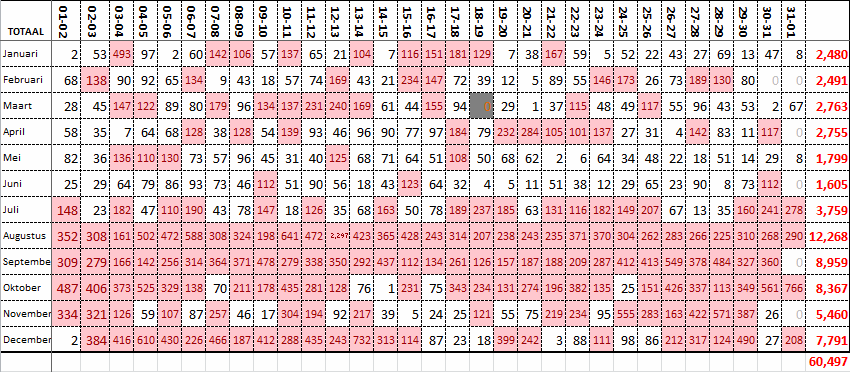
Figure 4 – Total number of orbits per calendar date accumulated for the years 2012–2016.
3 Evolution of the hardware
January 2016 started with 49 operational cameras at 15 stations and got a first expansion with a new camera, 393, at Uccles (Belgium) and another one, 394, at Dourbes (Belgium), far south near the French border. Especially the location in Dourbes proves to be a strategic position in order to complete the coverage of the atmosphere above Belgium. The only drawback at Dourbes is that no camera operator is available on site as the station is remote controlled from Brussels. Any intervention on site requires at least a half day to go to Dourbes to do some maintenance and to return. This situation explains why a technical problem with the 394 took about a month to be solved when also the second camera at Dourbes, the 395, got started on 1st of April. The three new cameras are owned by BISO and managed by Hervé Lamy and Stijn Calders. The purpose is to investigate the correlation between meteor trajectories obtained by video and the radio echo data obtained by the BRAMS project.
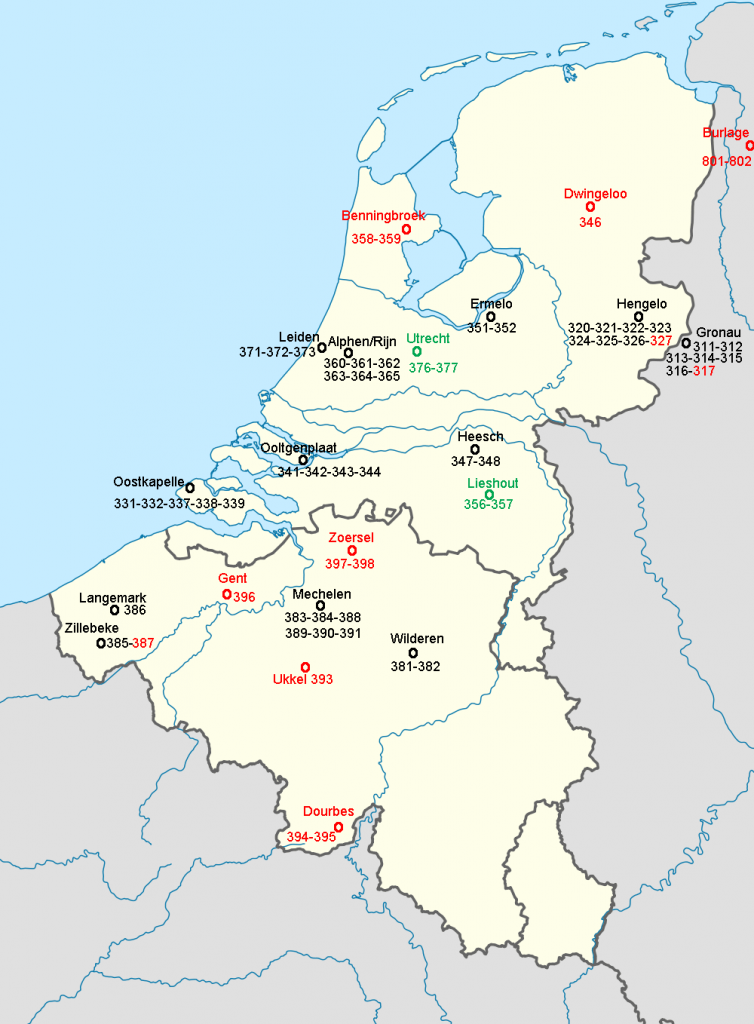
Figure 5 – Operational stations during 2016. Cameras and stations added in 2016 are marked in red, cameras and stations that were discontinued in 2016 are marked in green.
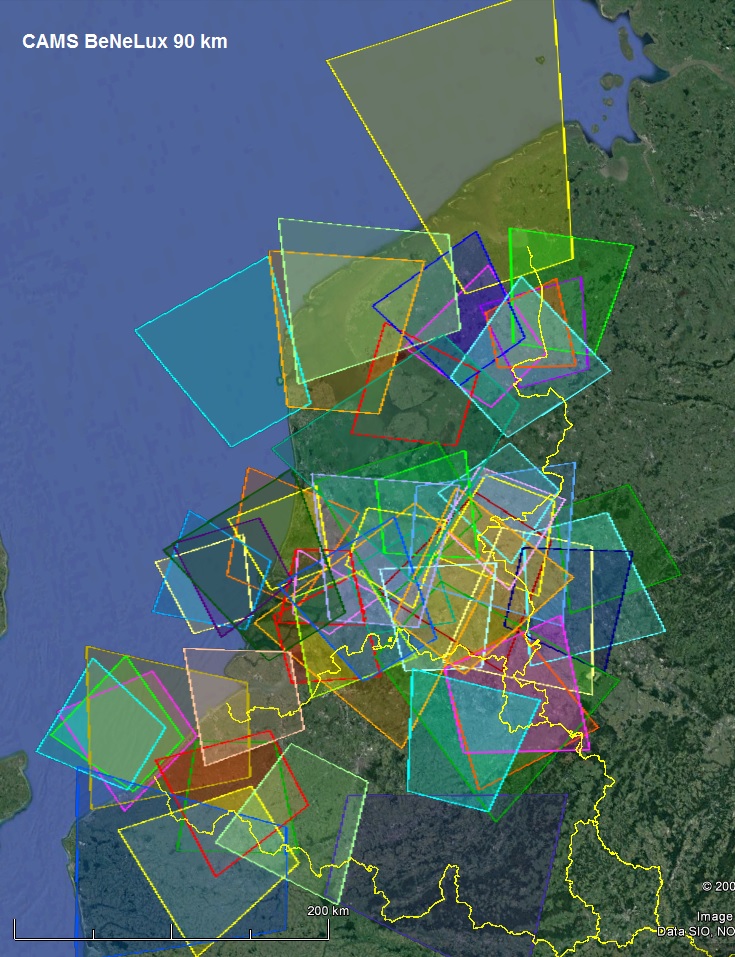
Figure 6 – Camerafields intersected at 90 km elevation, situation as on 22 January 2017.
From 13 March onwards the 356 and 357 were deactivated at Lieshout (the Netherlands) by Paul Lindsay due to lack of time. The new 327 registered its first successful night on 20-21 April in Hengelo, the Netherlands, operated by Martin Breukers and the 396 was switched on by Tim Polfliet on 27-28 April in Gent (Belgium). CAMS 358 and 359 were successfully started in July by Jos Nijland in Benningbroek (the Netherlands). CAMS 387 is another remote station at Ypres (Belgium) and was started on 5 August by Steve Rau. CAMS 346 was restarted mid-August at Dwingeloo (the Netherlands) by Cees Bassa.
Carl Johannink added CAMS 317 to his CAMS station on 26 September as a first step to provide coverage of the thus far unexplored atmosphere above the Northern parts of the Netherlands. CAMS 376 and 377 were switched off for several months by Felix Bettonvil in Utrecht (the Netherlands) due to technical problems.
Bart Dessoy turned his new CAMS 397 and 398 on in Zoersel (Belgium) on 21 November and on 12 December Robert Haas started a semi-remote station at Burlage (Germany) with CAMS 801 and 802 for coverage of the most northern part of the Netherlands.
All stations are plotted in Figure 5 and the corresponding camera fields are plotted as intersected at an elevation of 90 km in Figure 6.
4 Evolution of the software
The CAMS CaptureAndDetect software for single CAMS was developed to be used by amateurs to provide extra coverage with single cameras to the all-sky coverage of the three professional stations with 20 cameras each in California, USA. When some amateurs had two or four cameras on a single PC, CaptureTwoandDetect and CaptureFourandDetect had been developed, but except for two cameras this version did not work for the European version. Since the USB data capacity determines the bottle neck for the number of dongles (EzCap frame grabbers) that can be connected on a single PC, the idea was that for more than two cameras the SensoRay card is to be recommended. With amateurs running 4 or 6 Watecs on a single PC with dongles, Pete Gural decided to adapt the CAMS software with a version called CaptureDonglesAndDetect that allows combining up to 8 cameras connected with dongles on a single PC, assuming that the USB connection can handle this.
The newly developed software was tested by the author at the end of the summer 2015. The final version was successfully implemented in autoCAMS in March 2016. The new capture and detect software is more CPU efficient and has an optimized cloud mitigation included. Using the new version the problem with dropped frames disappeared on most PCs while the number of false detections got reduced to 10% of previous scores.
Besides the new CAMS software which has been stored and distributed in a well-organized way via Steve Rau, Steve also optimized the autoCAMS processes and assisted several CAMS operators to implement autoCAMS in order to cover all nights. The installation of autoCAMS definitely accounts to a large extend for the significant increase in the number of nights with orbits as well as the total number of orbits obtained in 2016.
Another important improvement was the newest version of the Binviewer, developed by Denis Vida, as confirmation tool. Detection points are marked with colors which make it much easier to recognize faint meteors and thus confirm these and get more chances for double station meteors. Several members of the CAMS team now use the Binviewer to do the confirmation.
5 Highlights of 2016
As far as the major meteor showers were concerned, only the Eta-Aquariids begin of May and the Perseids in August were favored with clear skies. The Perseid maximum on 12-13 August had clear sky and with 830 orbits this night broke all records in our CAMS BeNeLux history. All other major showers suffered poor weather circumstances with partial clear skies or totally over casted skies.
Some minor shower activity caught the attention of the network coordinators. At several occasions our hard working network coordinators, Martin Breukers and Carl Johannink, managed to surprise the entire team with enthusiastic reports. The smooth teamwork and rapid data delivery within the network in some cases meant that the CAMS BeNeLux network was the first to share results on some unusual events. The γ-Draconids (GDR-184) displayed an outburst on 27–28 July which was covered by only few stations due to poor weather (Roggemans, 2016). A distinct activity of the September ε Perseids (SPE-208) could be recorded in September with 77 orbits (Johannink, 2016a). Exceptional good weather allowed to collect orbits from different minor showers in September, (Johannink, 2016b). Activity from the predicted October Camelopardalids (OCT-281) was confirmed by the network with 4 orbits (Johannink, 2016c).
On the outlook for some predicted possible activity of the 66 Draconids (SDD-541), nothing was recorded for this shower but instead unexpected enhanced activity was recorded from the December kappa Draconids (DKD-336) in the night of 2-3 December (Johannink and Breukers, 2016).
The unpredictable nature of meteor showers guarantees that the CAMS project remains an exciting hobby for amateurs. One never knows which surprise may turn up from the registrations made during the night. Also 2016 confirmed that CAMS brings such surprises every now and then and this at great satisfaction of the entire team.
6 Annual CAMS day
Every year the participants of the CAMS project have a meeting to discuss technical issues, results and to organize the aiming points of the cameras. With the annual IMC being organized in the Netherlands with the presence of the global CAMS coordinator, Peter Jenniskens, the CAMS software developer Pete Gural and the developer of the BIN viewer, Denis Vida, the CAMS meeting was organized at the site of the IMC immediately after the end of the IMC.
Since the majority of the CAMS team did not participate in the IMC, CAMS operators could pick up a glimpse of the IMC and meet some people from abroad in the final hour of the IMC.
Although that the last two IMC sessions took place Sunday morning, a number CAMS people skipped these to enjoy an informal meeting with arriving fellows on a terrace right in front of the IMC host. Lunch time offered some extra time for informal chat.
The CAMS day had three eminent guest speakers in 2016 with Pete Gural, Peter Jenniskens and Denis Vida. For the first time ever all participants could ask questions and discuss technical aspects with the CAMS software developer as well as with the global CAMS coordinator. Denis Vida presented a demo of the functions offered by the Binviewer, which became a popular tool among the CAMS team.
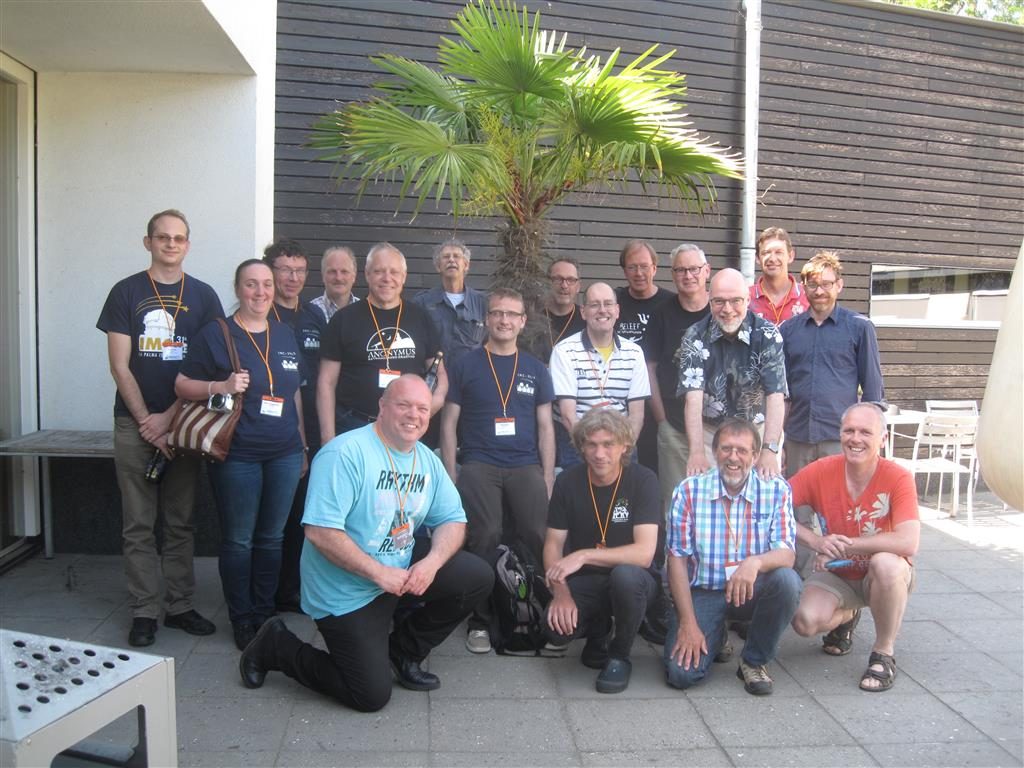
Figure 7 – 5 June 2016, CAMS-day at Egmond with from left to right: Denis Vida (Croatia, developer Binviewer), Adriana and Paul Roggemans, Martin Breukers, Pete Gural (developer CAMS software), Robert Haas, Piet Neels, Stijn Calders, Marc Neijts, Tim Polfliet, Peter Jenniskens (global CAMS coordinator), Hans Betlem, Jean-Marie Biets, Klaas Jobse, Carl Johannink, Jos Nijland, Felix Bettonvil and Erwin van Ballegoij.
7 Future options
Comparing 5 years statistics of the CAMS Benelux network (see Figure 8); it is obvious that with over 300 nights we reached the limit of number of nights that may allow successful video meteor work in our climate.
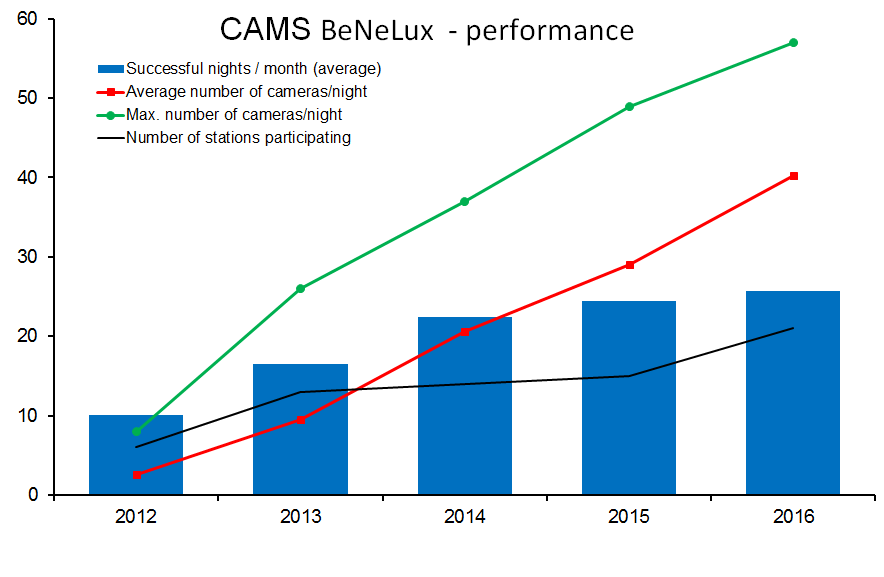
Figure 8 – The evolution of the CAMS network like in Figure 1, but on annual bases.
There is still room for improvement:
- Increase the number of stations using Auto-CAMS to improve coverage during partial clear nights;
- Increase the density of the network with extra cameras at existing stations as well as with new stations;
- Try to set-up remote controlled stations where nobody is interested in CAMS, and, or try to encourage amateurs in neighboring countries to connect to the CAMS BeNeLux network.
- The green and the black line in Figure 8 can increase further while the red line can converge towards the green line by using AutoCAMS at more stations.
8 Conclusion
By end of 2016 the BeNeLux CAMS network has achieved an operational status capable to collect many orbits on any single night. On annual bases CAMS BeNeLux is now doing better than the famous Japanese Sonotaco network which started in 2007. With its current configuration, clear sky is all that the network needs to score large numbers of orbits.
Acknowledgments
Great thanks to the 2016 CAMS@BeNeLux team:
Cees Bassa (Dwingeloo, 346), Hans Betlem (Leiden, operating CAMS 371, 372 and 373), Felix Bettonvil (Utrecht, operating CAMS 376 and 377), Jean-Marie Biets (Wilderen, operating CAMS 381 and 382), BISA – Hervé Lamy and Stijn Calders (Dourbes, operating CAMS 394 and 395, Uccle, operating CAMS 393), Martin Breukers (Hengelo, assistant coordinator and operating CAMS 320, 321, 322, 323, 324, 325, 326 and 327), Bart Dessoy (Zoersel, operating CAMS 397 and 398), Franky Dubois (Langemark, operating CAMS 386), Luc Gobin (Mechelen, operating CAMS 390 and 391), Robert Haas (Alphen aan de Rijn, operating CAMS 360, 361, 362, 363, 364 and 365, Burlage, 801 and 802), Klaas Jobse (Oostkapelle, operating CAMS 331, 332, 337, 338 and 339), Carl Johannink (Gronau, coordinator and operating CAMS 311, 312, 313, 314, 315, 316 and 317), Paul Lindsay (Lieshout, operating CAMS 356 and 357), Koen Miskotte (Ermelo, operating CAMS 351 and 352), Piet Neels (Ooltgenplaat, operating CAMS 341, 342, 343 and 344), Jos Nijland (Benningbroek, 358 and 359), Tim Polfliet (Gent, operating CAMS 396), Steve Rau (Zillebeke, operating CAMS 385 and 387), Paul Roggemans (Mechelen, operating CAMS 383, 384, 388 and 389) and Erwin Van Ballegoij (Heesch, operating CAMS 347 and 348).
Thanks to Pete Gural, Peter Jenniskens and Denis Vida for their presentations at the CAMS day and their continuous support in many ways.
References
Johannink C. (2016). “Activity of the September Perseids”. MeteorNews, 1, 104.
Johannink C. (2016b). “CAMS Benelux contributed 4 OCT orbits”. MeteorNews, 1, 135.
Johannink C. (2016c). “CAMS BeNeLux September results”. MeteorNews, 1, 132.
Johannink C. and Breukers M. (2016). “Stabbing the Dragon with some enhanced activity”. MeteorNews, 1, 139.
Roggemans P. (2016). “Outburst of July Gamma draconids”. MeteorNews, 1, 80–81.

